Eco-friendly Fashion:
Innovator Pioneers Banana-made Fabric in Uganda
Written by: Hellen Kabahukya. Photography by Richard Mugambe
Written by: Hellen Kabahukya. Photography by Richard Mugambe
In a remarkable fusion of waste and innovation, a young man in Uganda has created something uniquely fashionable: a commune fabric woven from banana fiber and cotton.
Cotton, polyester, linen, wool, leather, satin, nylon, silk – the list of clothing fabric goes on and on. The increasing demand for clothing has seen the textile industry rapidly grow globally, both in natural and synthetic fabrics.
Globally, many synthetic fabrics were introduced as an alternative to natural ones to quench the demand and reduce manufacturing costs. But these synthetic fibers were also the beginning of an environmental catastrophe.
The extensive use of chemicals and dangerous protective measures has wreaked havoc on the environment.
With this awareness, the textile industry started to dig for more eco-friendly and sustainable materials which lean towards plant-based fabrics like hemp or pina (pineapple leaf) and banana fiber– sustainable and biodegradable alternatives.
When it comes to out-of-the-box ideas, making fabric out of banana stems may sound as a far-fetched idea. But trust human ingenuity.
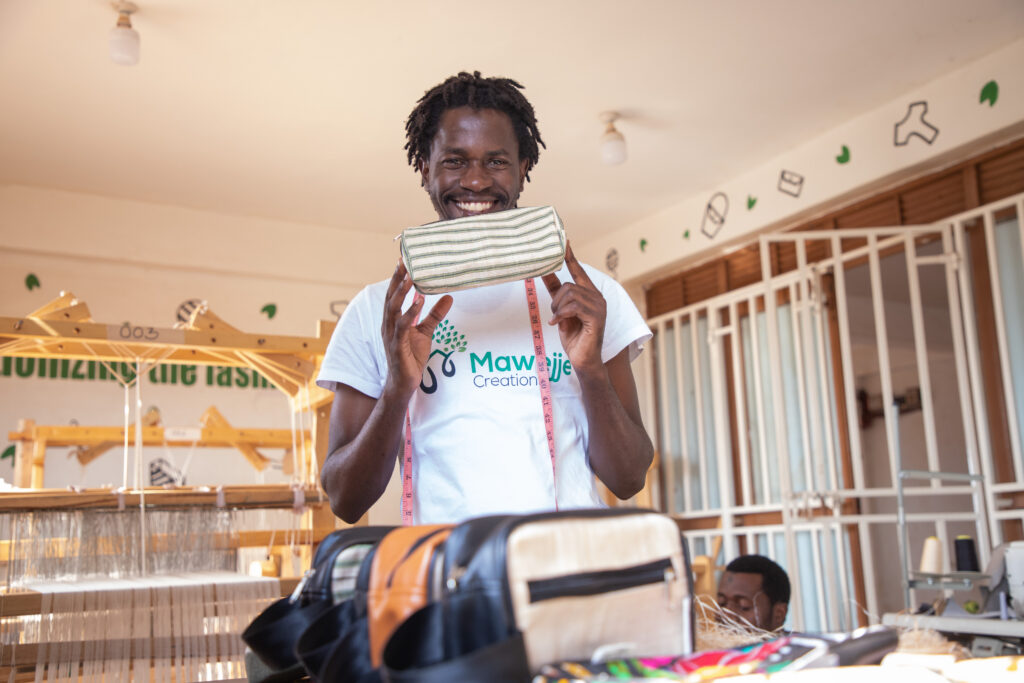
Muhammed Dima Mawejje the proprietor of Mawejje Creations speaks to Solutions Now Africa. Photo by Richard Mugambe.
Ugandan entrepreneur Muhammed Dimma Mawejje, came up with the concept, to create an eco-friendly alternative to synthetic fabric, using one specific banana species in the country.
“Microplastics are commonly found in mass produced textiles in the fast fashion industry, but using natural fibers like alpaca, cotton and banana we can improve both environmental and public health” he explains.
In his words, he is rewriting the fashion narrative in Uganda.
“We started out with handicrafts that we were making using the dry coat of the banana and we promoted them heavily but in the background, we were experimenting with different banana stems to see what more can be achieved,” he explained.
While this may not be a unique concept in the global context, it marks an exciting shift in the fashion and textile landscape of Uganda.
Mawejje trained with Texfad, a banana fiber recycling organization where he picked up the skill to produce products from Banana fiber a craft he has done for close to 5 years
“After some rigorous research we realized we could make fabric from the stem itself and honestly I just wanted something for us as Ugandans beyond the bark-cloth, something made from here sustainable and quality.”
In 2023, he finally found the right banana stem, which prompted him to expand and open up a weaving shop to start producing what he dubbed the commune fabric.
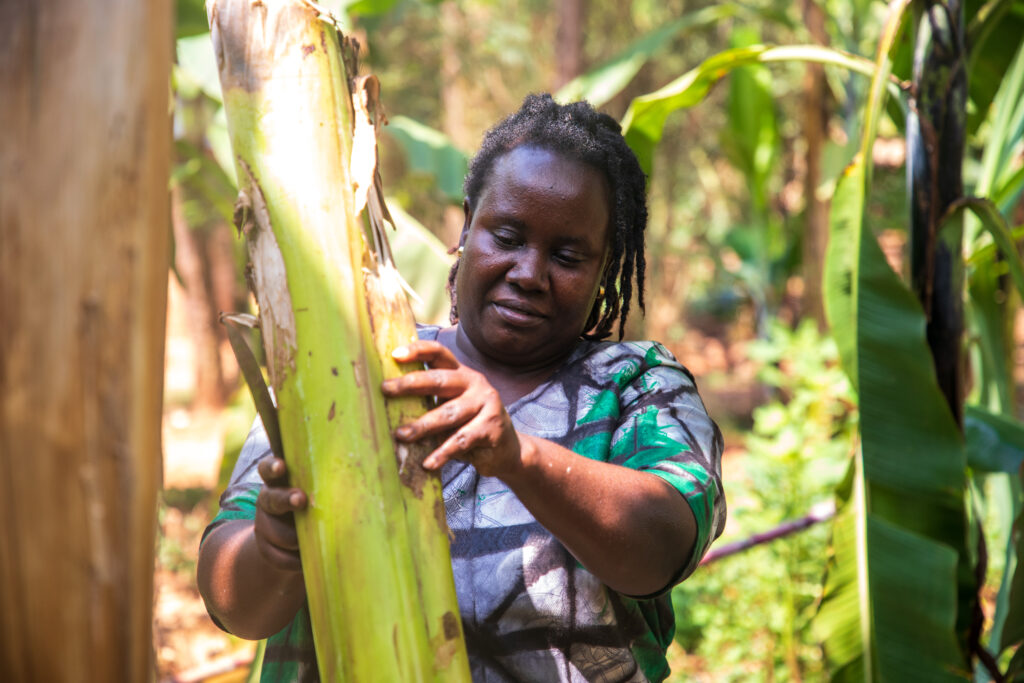
I woman rips layers of a banana stem ahead of production at Mawejje Creations outside Kampala. Photo by Richard Mugambe.
-The Origin fiber-
The Philippines was the first place where banana stems and peels were used to make fabric. The productive island is home to a large number of banana trees, and the people of the area have been making banana fiber for centuries.
Many other Asian cultures have experimented with banana-based fibers in history, including India. India has gradually replaced the Philippines as the world’s biggest hub for banana fiber.
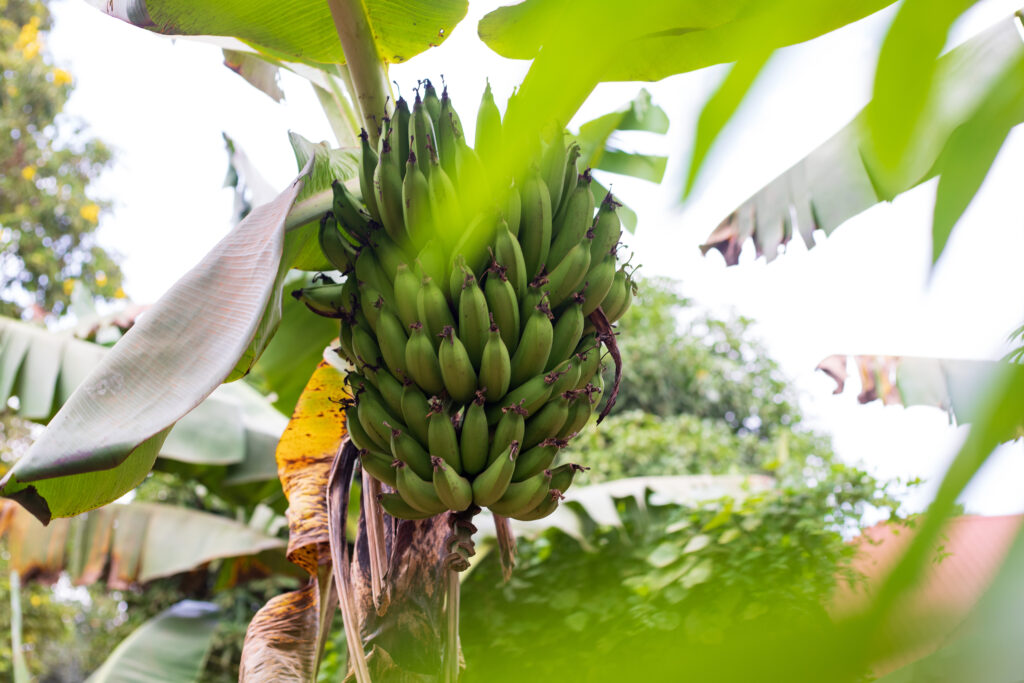
The Banana Plant, locally known as Matooke is a staple in most communities in Uganda. Photo by Richard Mugambe.
In Uganda, although the country is one of the world’s largest banana producers and the largest producer in sub-Saharan Africa, our production line of bananas is limited to food consumption.
“Beyond food, the banana leaves, and a few bits of the dry fiber, we have little to no use of the rest of the plant. If we stretch the use, the stems are usually used in alcohol brewing and cultural functions but they are more or less useless,” Gorret Namirimo, a market vendor, explains the use of the banana plant to her.
She adds that outside food production, children use it to make different play materials like dolls, balls, ropes, and make-believe guns.
Over the years a few innovators have come up to recycle the banana stem but have worked with it in making handicrafts, hair, and interior designs from its yarn.
“We make hair from the strands of the banana fiber, and we do a lot of interior design and home décor from the fiber itself,” explained Juliet Tumusiime the founder of Cheveux Organique a banana hair company
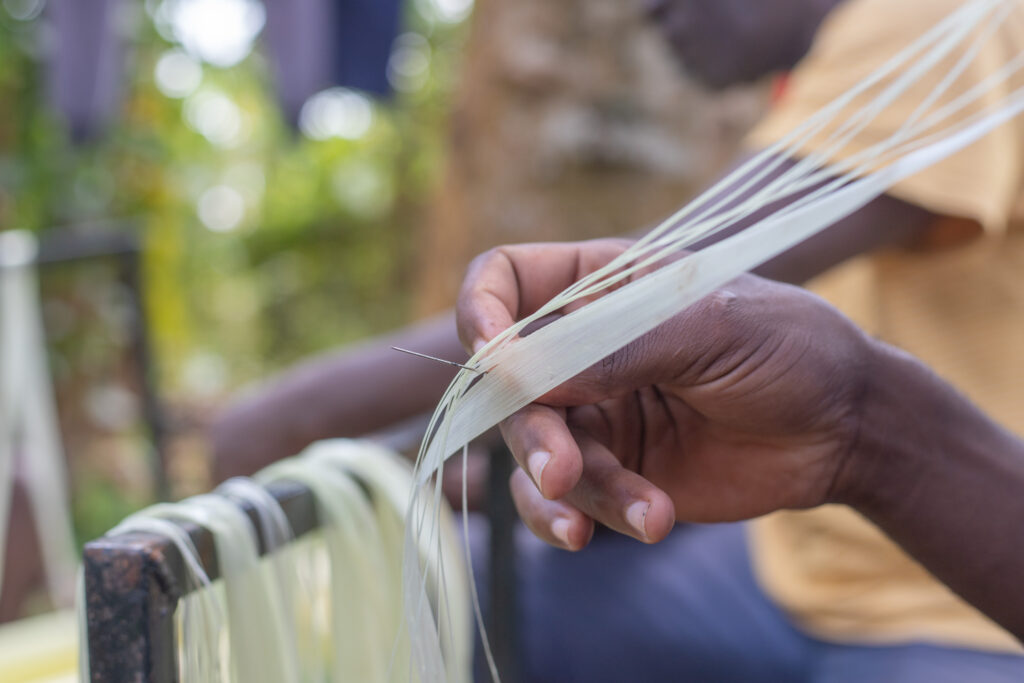
Shredded banana stem cuttings are being prepared for processing. Photo by Richard Mugambe.
Producing the Commune Fabric
Not every banana can make the yarn, they are over 1,000 known varieties world wide with Uganda having 84 varieties. While some of these varieties can make other products, for the commune fabric only one could do the job.
“We noticed that the different varieties we were using were either weak or too stiff, so we tried out the juice banana which is locally known as kayinja and it was perfect,” Wasswa Shafiq the production head at Mawejje creations explains.
It made a perfect yarn.
“I got a team of weavers and designers and we started to make various fabric prints that can be used to make different clothing, and over time we blended fibre with cotton” He asserts.
Banana plantations are abundant in the central region, making banana plants an ideal source of sustainable fashion materials.
The process begins with selecting the finest juice banana plants, typically grown organically.
“The farmers are the most important part of this entire process and we are glad that within the area, we have made partnerships with different farmers who have been pivotal in providing us with the right variety,” Wasswa explains.
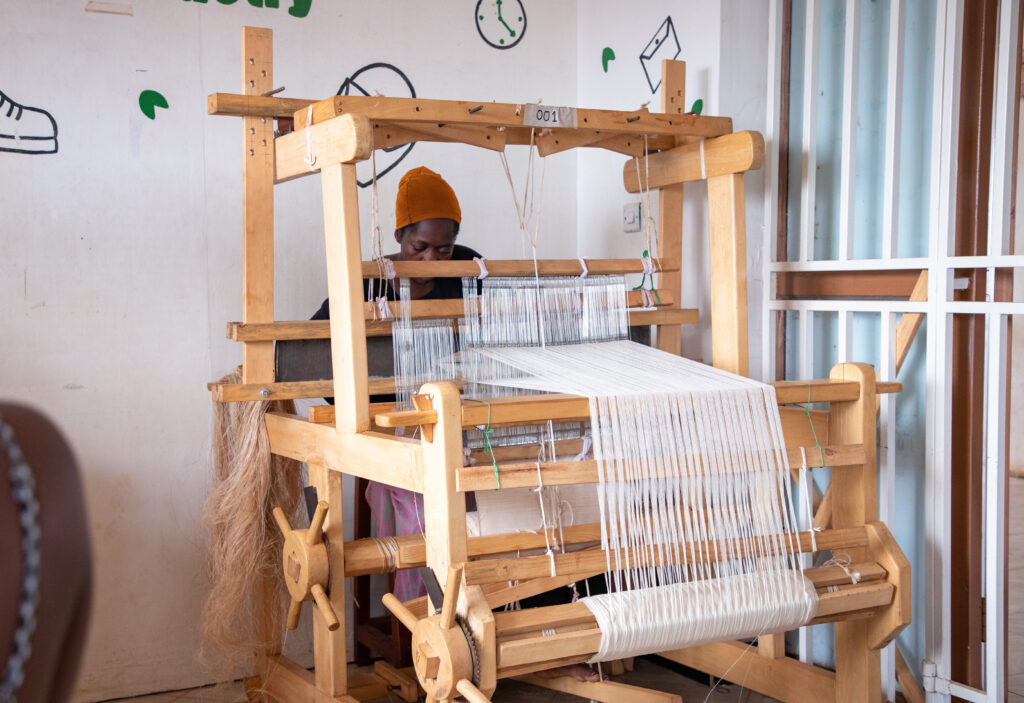
Process fiber being dried for further process. Photo by Richard Mugambe.
Once the farmer has harvested all that they need of the banana, they collect the stems and deliver them to the organization at a cost where they are manually and carefully processed to extract the delicate fibers.
These are then put out to dry before they are sent out for weaving.
“These threads, renowned for their strength and flexibility, are woven into intricate patterns to create what we call the commune fabric,” Mawejje explains.
Mawejje says that they do not use water, pesticides and synthetic chemicals, contributing to a reduced environmental footprint. While they add cotton to the fabric, it is more about versatility, natural comfort than the need to add to it.
The commune fabric is currently used to make bags and the in-house tailors are testing it out for clothing.
“Currently we are producing the fabric to give it to different designers to see how much more can be done with it,” Mawejje explains.
He however adds that the production is very slow given that the production process is labor-intensive and very manual. He hopes that they can get a machine that will not alter the quality and produce at a larger scale in future.
© 2022 - Media Challenge Initiative | All Rights Reserved .
© 2022 - Media Challenge Initiative | All Rights Reserved .